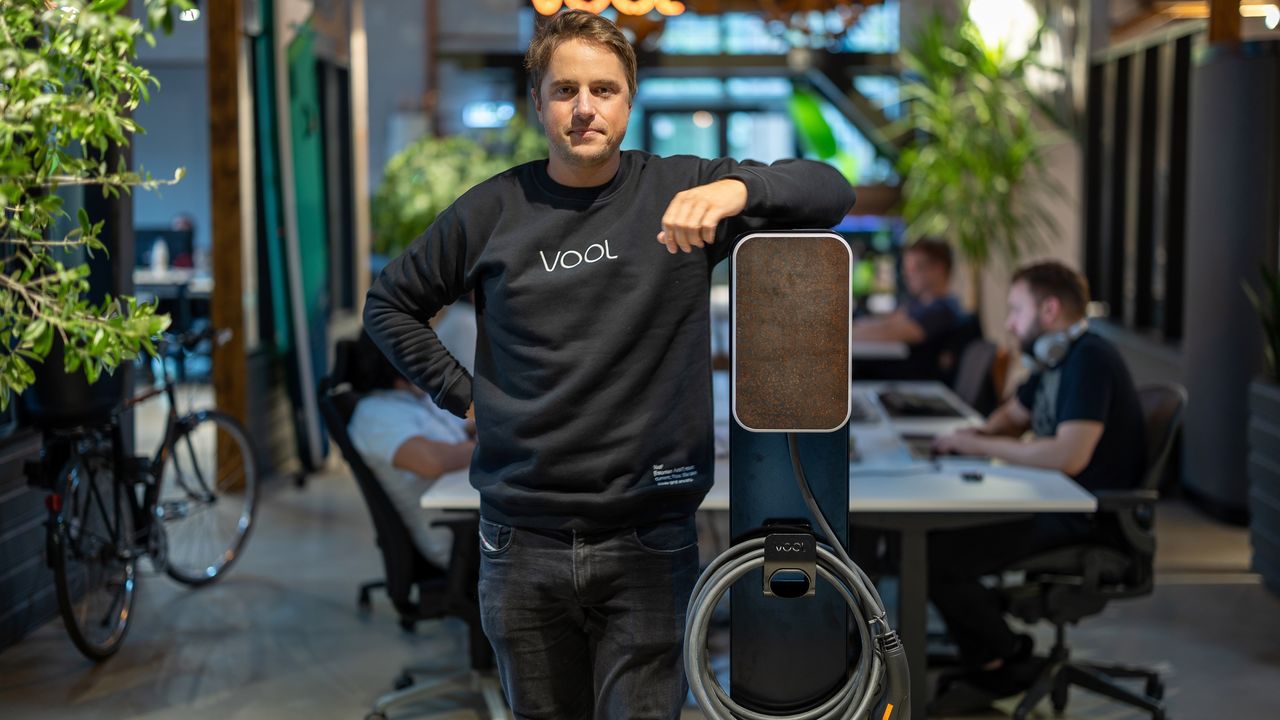Today, almost all automakers aim to transition most, if not all, of their automotives to electric vehicles. However, the widespread adoption of electric vehicles contributes to an increase in overall electricity demand and highlights more significant vulnerabilities within the grid.
Charging an EV requires significant power, especially if fast-charging technologies are employed. This additional demand can strain local grids, particularly during peak hours. And vehicle owners are left frustrated by vehicles that need to be charged more efficiently.
I recently met with Juhan Härm, CEO of EV charging company VOOL, on a recent trip to Estonia. The idea for the company arose while Härm was working in a distribution grid company.
He explained,
"We had a lot of customers coming to us saying that the circuit breakers are tripping. 'We need a bigger grid connection. Can we upgrade?'"
While a bigger connection sounds like a simple solution, the bigger challenge is the underutilisation of the distribution network. Europe primarily has a three-phase distribution network, meaning three wires or phases connect to your home. Each can supply a certain dependency depending on the devices that run on it.
Härm recalled:
"In Estonia, we measured the live data coming in daily and found that, on average, the most-loaded phase was around three times more than the least-loaded phase.”
“Currently, you still have access to only a fraction of the full capacity of the grid, even though the whole of Europe is connected to three phases of electricity.
It's essentially a last-mile grid problem. And up until now, the only solution for balance was rewiring the devices you installed inside the electrical panel in your home."
VOOL's technology uses the existing grid three times more efficiently than average without causing an overload, providing reliable and cost-efficient charging for both business and private customers.
Härm explained, "We devised an effective way to switch the loads between the three phases without interruption when needed. This way, we can offer reliable and sustainable automatic charging.
If consumption in any of the three phases becomes too high, its technology tells VOOL chargers to switch consumption to a less loaded phase. This means electrical fuses will never trip.
A local solution to a complex problem
VOOL was founded in 2018 by energy experts Juhan Härm (CEO), Sander Vahtras (CPO) and Hindrik Kilter (CTO).
It decided to develop its own EV chargers after finding most of them were of a lesser quality and "weren't that great to look at."
The company also saw a market of people buying the solution, not just the software or hardware.
Unlike most EV charging companies, VOOL manages the whole development of its hardware and software in-house. Its solution includes the charger, hub, app (B2C), web platform, and admin portal (B2B).
These work together as a system or can be used independently. The system is compatible with all cars, other chargers and software solutions.
"So now we have this one-stop-shop solution; you get the best load management on the market, and the charger is straightforward to set up," explained Härm.
Incentivising EV infrastructure through great efficiency
So far, VOOL has strong traction with small and medium enterprises, including parking lots, hotels, and real estate. VOOL's grid efficiency enables buyers to avoid the additional costs associated with infrastructure upgrades and building new charging spots.
The software also tracks electricity prices, ensuring an EV is charged within the set timeframe at the lowest possible cost.
Further, VOOL's technology is patent-pending, and the company plans to bring a smart panel to the market that works as an efficient home energy management solution. It helps to integrate solar panels, EV chargers, and all other electrical devices into one system, which automatically switches the loads between the three phases with all the electrical devices in the household when needed.
"With further development of new products, it will be possible to use the technology for the whole household," says Härm.
The company is also discussing developing low-cost vehicle-to-grid (V2G) charging in the future.
Electric batteries are highly efficient at storing energy, and V2G charging allows users to contribute energy back to the grid either for payment or during peak times or emergencies. According to research from McKinsey, Europe will need at least 29 million private charging points by 2030, offering highly valuable short-term energy storage, marking a significant advancement in sustainable energy solutions.
But as Härm notes, this relies on the rollout of affordable EV charging solutions in the first instance.
According to the European Automobile Manufacturers' Association, or ACEA (ACEA), just seven EU countries offer incentives for charging infrastructure.
Last month, the company raised an additional seed investment round of €1.3 million. Along with a grant of €1.62 million, bringing its total funding to €7.62 million.
The biggest angel investors were VOOLs own employees
Currently, VOOL operates in the Baltics and Finland, Sweden, Norway and Denmark and employs 44 people.
Specialist VC led that investment round, which attracted a mix of influential real estate developers, such as Kaamos Group and Astri Group, as well as investment company Amalfi.
New angel investors participating in the funding round include Taavi Veskimägi (the former chairman of the board of Estonia's independent electricity and gas system operator Elering), and Kuldar Väärsi (founder of Milrem Robotics).
Its angel investors include the former president of Estonia, Kersti Kaljulaid, the first CIO of Estonia and founder of the e-Residency programme and Taavi Kotka, the first employee of Pipedrive and the current chief architect at VOOL, Elar Nellis, and many others.
However, the biggest angel investors were VOOL's own employees, giving 15 percent of the investment round.
Lead image: VOOL CEO Juhan Härm. Photo: Uncredited.



Would you like to write the first comment?
Login to post comments